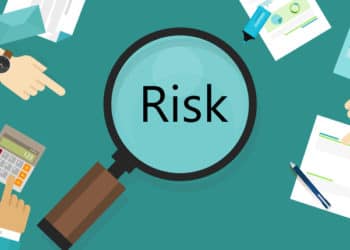Percentage based stop loss is the most basic stop loss order in the financial world. If you trade forex or stocks or any other financial instrument this every time means risk, which you can control. Instead of just plunging your stake with a stop loss. Professional traders and investors always use a stop loss. The stop loss order is a simple but effective order that protects you in case of an unexpected turn in the market. This means for example “1% of the account at risk” means that you can maximum lose 1% per trade you make. So If you have a trading account with $100,000 and you risk 1% per trade, you can lose $1000 on a trade.
A “stop loss” in investing/trading is an order to sell your investment if it falls to a certain level, at which point you don’t want longer to risk more money. You can place a stop loss order anytime you buy or sell. So if you buy for example EUR/USD on 1.1000 and you have a stop loss on 1.0900 and price hit that level, online trading software will send the order to close out your trade instantly. This is a very good tool, so you don’t need to constantly watch your MT4 or any other trading software.
But how much % should I risk per trade? The percentage of risk can vary from the trader to the trader, which means if you are an aggressive trader you will risk 10% of the capital on a trade and if you are a professional trader you will not risk more than 2% per single trade. Once you understand how much % of account you want to risk on any single trade, the forex trader uses his position size calculator to calculate the position size he needs to open on a single trade.
The problem of percentage stop loss: You always calculate percentage stop loss based on your trading account size that could increase or decrease. So, if you have a losing trades, this decreases your account so your percentage risk you calculate will be based on that decreasing trading account size and you know what is the problem here? It will take the trader much longer to recover from the losing trades then someone who trades with a fixed amount stop loss no matter what size his trading account is. Trades also use stop loss based on volatility, chart analysis or time.
There are some common mistakes that traders do when placing their stop loss order in forex:
- Very tight stop loss ( Don’t put the stop loss order very tight, because the forex market is very volatility. So for example if you have a profit target of 100 pips on trading pair AUD/ USD, you need to place a wider stop loss to accommodate the price volatility ).
- Using a stop loss based on pips ( A lot of traders commit this mistake by sticking to a set number of how many pips they will risk for a trade. You can’t place stop loss orders like that, because there are no two setups exactly the same in the forex market. Always be flexible when you calculate how many pips will you risk per trade ).
- Very big stop loss ( The opposite of very tight stop loss is a very wide stop loss, which increases your chances of making a huge loss by being overly exposed in the forex market ).
- Stop loss based on support and resistance levels (Never place stop loss exactly on support or resistance levels as this is areas where the market can turn on your side).
Why should you use a stop loss order in the forex market? Trading without the losing trades doesn’t exist, so the losses are part of the process. This is a big problem for the new traders, when they come on the forex market they have unrealistic expectations and opening trades without stop loss order. This every time end with blowing their accounts. They continue with searching for the holy grail that doesn’t exist. Believe me or not, when stop loss order hits your trading account this is a good thing because this means that you use a good money management system you can become a professional trader.







